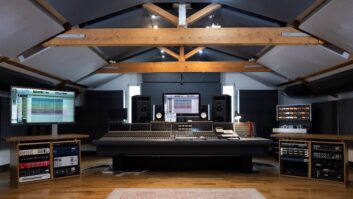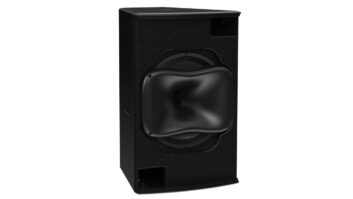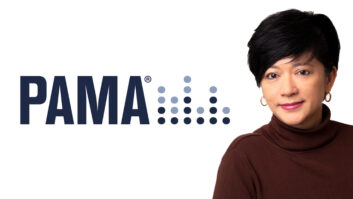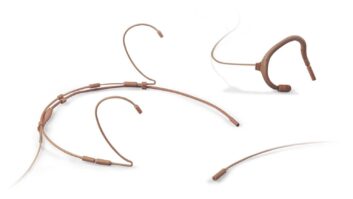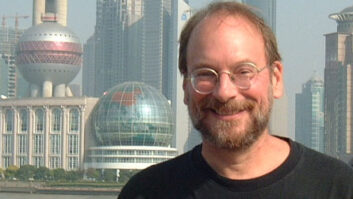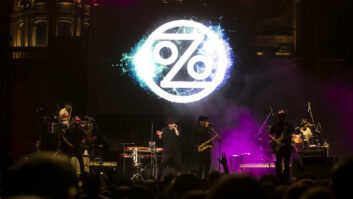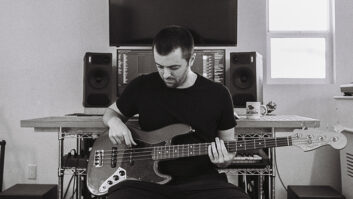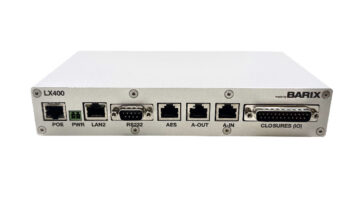New York, October 11, 2019 – British-Nigerian singer/songwriter Ola Onabulé’s latest studio album Point Less has 14 original tracks that tell tales of violence, immigration, xenophobia, betrayal, and dignity too. The album is at once a celebration of life and also a warning of the social forces that threaten it. Onabulé’s short US tour kicked off with the album launch, before taking the jazz artist to the Exit Zero Jazz Festival (November 8 and 9), the South Jazz Club Philadelphia (November 10) and Scullers in Boston (November 15). Ola is a veteran of the recording studio and, with the help of Sennheiser and Neumann microphones, has fully captured the complexity of his music, its heart and its spirit.
Ola Onabulé has a career spanning more than 20 years. He has performed at some of the most prestigious jazz festivals – Montreal, Vancouver, San Sebastian, Istanbul, Washington and Umbria to name a few – as well as at concert halls and jazz clubs around the world. His compositions cross cultural and musical boundaries with Ola taking a hands-on approach, immersing himself in not only his songwriting but also in the technology that faithfully brings his distinctive sound to his recordings.
While Ola is always open to new ideas, there are certain things that are constants: For many years, Neumann and Sennheiser microphones have played a large part in both his recording and live work. His devotion to the two brands is, he says, based on audio fidelity and the support the two companies provide.
“I generally work with acoustic instruments, so I need microphones that allow me to hear everything in the recording; the thing that got me emotional, or inspired me, or gave me 20 other new ideas…,” he explains. “I want to hear that on the recording, so any microphone that can give me what I heard with my ears is the one for me. Both Sennheiser and Neumann have developed a range of tools for people who don’t want things to sound too lofty and want to capture the truth. Neumann in particular has a reputation for designing microphones that do that. Sennheiser has a slightly wider range of microphones, with dynamic as well as condenser mics available in the range, giving me a different part of the spectrum to play with. Between the two ranges, they cover just about all of my needs.”
Point Less has been recorded in Ola Onabulé’s own recording studio using a Neumann M 150 Tube, a U 87 Ai and M 149 for vocals. Ola knows the M 150 Tube is an unusual choice, being a small-diaphragm omni microphone, but says that it works particularly well for male vocals, especially those in the low/mid-range, for avoiding the proximity effect when getting up close and personal. Monitoring is via a Neumann KH 310 A system with a KH 810 sub.
Ola and his band, which includes a bass player, pianist, guitarist and drummer, record in his live room with no real isolation between instruments – only the drummer has the most minimal of drum screens. As Ola wants to maintain eye contact between everyone, emulating their stage performance, this necessitates setting up the songs and the recordings so that, although there would be bleed in the room, it would not ruin the performance.
“None of the instruments will have too much captured in another’s mic, so when the mix engineer gets it, it will still make musical and audio sense,” he explains. “These are the kinds of challenges I think about when I am writing, too. I’ve always felt that writing a song, recording a song, and production and arrangement are all part of a wider process. The guys that I admired whilst growing up, people like Prince, more or less lived in the studio – the distance between his bedroom and the mixing desk was a very short one. I have always envisaged music making in the same way.
“I know a lot of folks think I write my songs on a note pad, I sing them, then a whole team of other people gets involved to make it the thing that I’ve imagined. But that’s not the way I do it. Writing and production – both technical and creative – are all part of the same process to me. Every idea immediately starts to formulate a concept of how I might mic it, how I might EQ it, how many parts I might play, the frequency arrangement for the guitar to play, does that conflict with the chord or maybe the spread of notes that I want the pianist to play? I might choose different chords so there’s no conflict between instruments. Each thing is distinct and can be heard, even though the music is busy and lively.
“I also do very elaborate and detailed demos which are essentially mock-ups of exactly what I want the guys to play. I’ll play the percussion bits, guitar, bass and drums first, so I know exactly what’s going to be happening on session day. That means I have all the possible miking options available to me. I can kind of future-proof what is about to happen with the recording. The music is so intricate, with lots of fiddly bits that need to be caught, so I have a very detailed recording list and plan sorted out so that I can make sure I avert any shocks or surprises on the day.”
Over his last three albums, Onabulé has refined this process, making everything ‘sing’ in his studio space. He uses careful mic placements, making sure that each one is perfectly positioned so that, for instance, the double bass mic does not become a glorified drum mic, capturing everything else in the room.
“I have also created this thing I call a bass cave around the double bass,” he says. “It’s a structure that protects it from a lot of the sound around. I have the mic facing directly at the f-hole, which is the most sensitive part of the quietest instrument in a room such as mine.”
Whilst Ola is hands on in the studio, he has never mixed any of his albums: “I just spend so much time with the songs through all the processes from conception to recording that it is a huge relief to hand them over to a fresh set of experienced and critical ears.”
These ears belong to US-based George Whitty – a much in demand pianist and keyboardist (Dave Matthews, The Brecker Brothers and Santana) who also moonlights as a Grammy Award winning producer and mix engineer. Whitty has mixed Ola Onabulé’s last two albums.
“I love the clarity and depth of George’s mixes,” Ola explains. “Each instrument holds its space with confidence and nothing feels like it has been whittled down to its bare essentials to allow something else to be heard. I like the way he applies EQ and compression to my voice and how he places it high in the mix, prioritising intelligibility and narrative such that it makes it feel almost like I’m a folk singer/songwriter featuring on a jazz soul album.”
Onabulé is increasingly finding himself both connected and working in the United States. “As well as my connection with George, I’m fortunate to have American management and representation,” he says. “It seems I’m on the verge of forging a strong relationship with the country.”
To find out more about Ola and Point Less visit: www.olasmusic.com, www.facebook.com/olaonabuleofficial, or www.youtube.com/user/OlaOnabule.
